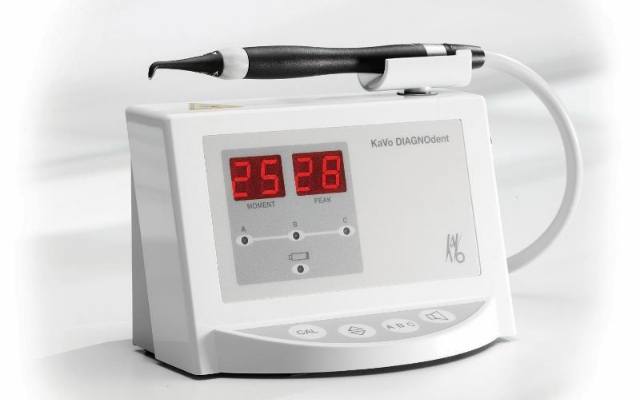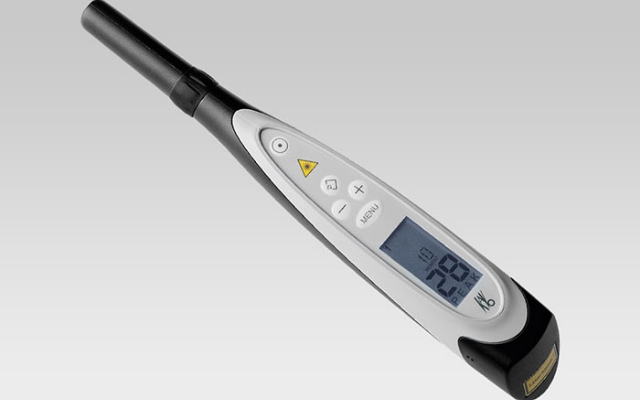DIAGNOdent – Chaska, MN
Detecting Cavities Early On For Better Oral Health
One of the most important things we do for our dental patients is to identify and fill cavities. Since any spot of decay can threaten the integrity of an entire tooth, detection is key to preventing a host of potential problems. Lengthy poking and probing sessions have been an acceptable, if not very comfortable, part of dental exams for years. However, such methods of decay detection are only 50 to 75% successful. Cavities can hide along fissure lines or inside biting and chewing surfaces. Further, mechanical exploratory methods are limited to finding only those cavities that are equal to or larger than the probe head. To make the process more comfortable and comprehensive, we use DIAGNOdent, a revolutionary dental laser that finds cavities in the earliest stages.
Laser Reflection Spots Imperfection

DIAGNOdent technology uses a laser diode to inspect teeth, comparing reflection wavelength against a healthy baseline wavelength to uncover decay. First, we take a benchmark reading by aiming the laser onto one of your healthy enamel tooth surfaces before shining the laser into all suspect areas. As it pulses into grooves, fissures, and cracks, the laser reflects fluorescent light of a specific wavelength, which is measured by receptors, converted to an acoustic signal, evaluated electronically to reveal a value between 1 and 100, and then displayed on a screen. Any variation from the healthy baseline value stimulates emission of a different wavelength and alerts us to a weakened area of decay. Not surprisingly, this technology quickly and precisely identifies even the tiniest bit of decay. This leads to shallower, simpler fillings, preserving more tooth structure. No X-rays are required with DIAGNOdent, so patients do not have to worry about radiation exposure.
Dental Sealants and Tooth Decay

Since previous examination methods of decay detection were inconclusive or subjective, many teeth with small, undetected areas of decay had sealants placed on them. Upon examination and evaluation, sealants may be placed on a case-by-case basis.









